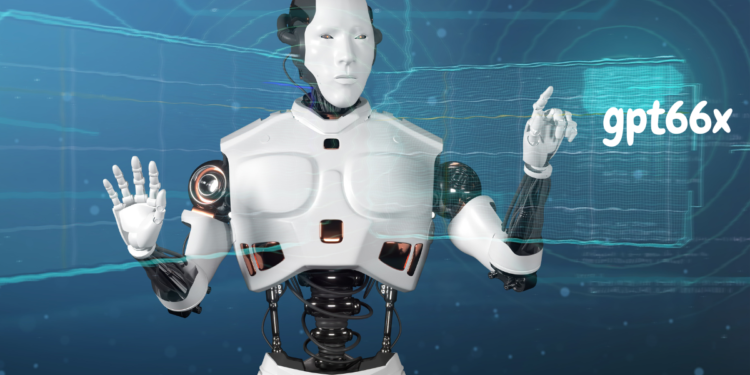GPT66X stands as a pinnacle of advancement, revolutionizing the way we interact with technology. Developed as an iteration of its predecessors, this cutting-edge model encapsulates the forefront of natural language processing, promising unparalleled capabilities and potential. In this article, we delve into the depths of mastering GPT66X, exploring advanced techniques and unveiling its diverse applications across various domains.
Understanding GPT66X
GPT66X, an acronym for Generative Pre-trained Transformer 66X, represents a leap forward in AI research and development. Built upon the foundation of its predecessors, GPT66X incorporates intricate neural network architectures and vast datasets to comprehend and generate human-like text with remarkable fluency and coherence. Its ability to grasp context, infer meaning, and generate responses has elevated it to prominence in fields ranging from content generation to conversational agents.
Advanced Techniques
Fine-tuning stands as a pivotal technique in the mastery of GPT66X. At its core, fine-tuning involves adjusting the parameters of the pre-trained model to align with specific tasks or domains. This process typically begins with initializing GPT66X with pre-existing weights and then exposing it to task-specific datasets for further training. Through fine-tuning, the model adapts its internal representations to better capture the nuances of the target domain, thereby enhancing its performance on specialized tasks.

One of the key advantages of fine-tuning lies in its ability to leverage transfer learning. By building upon the knowledge encoded within the pre-trained model, fine-tuning significantly reduces the need for large annotated datasets, making it particularly useful in scenarios where labeled data is scarce. Additionally, fine-tuning allows for iterative refinement, enabling users to fine-tune GPT66X on progressively more challenging datasets to achieve higher levels of performance.
Multi-task Learning
Multi-task learning represents a sophisticated approach to mastering GPT66X, wherein the model is trained on multiple related tasks simultaneously. Unlike traditional single-task learning, which focuses on optimizing performance for a specific task, multi-task learning encourages the model to leverage shared representations across diverse tasks, thereby enhancing generalization and robustness.
At its essence, multi-task learning involves jointly optimizing a shared set of parameters across multiple task-specific objectives. By exposing GPT66X to a diverse range of tasks, such as text classification, language modeling, and question-answering, multi-task learning fosters a more comprehensive understanding of language and context. This holistic perspective not only improves performance on individual tasks but also enables GPT66X to transfer knowledge between tasks more effectively.
Prompt Engineering
Effective prompt engineering lies at the heart of maximizing the utility of GPT66X. A prompt serves as the input or guiding instruction provided to the model to elicit a desired response. Crafting prompts that are clear, concise, and contextually relevant is essential for steering GPT66X towards generating accurate and coherent outputs.
Prompt engineering encompasses several key considerations, including the formulation of prompts, the selection of appropriate context, and the framing of queries. By tailoring prompts to the specific task or application at hand, users can influence the output generated by GPT66X and steer it towards desired outcomes. Moreover, prompt engineering involves iteratively refining prompts based on feedback and performance evaluation, ensuring continuous improvement in model responses over time.
Applications Across Domains
GPT66X emerges as a powerful tool for content generation, enabling the automatic creation of articles, stories, and other textual content with human-like fluency and coherence. By leveraging its language modeling capabilities, GPT66X can generate content on a wide range of topics and styles, catering to diverse audience preferences.
The application of this in content generation streamlines workflows for content creators across various industries, reducing the time and effort required to produce high-quality content. Whether it’s generating product descriptions for e-commerce websites, crafting marketing copy for advertisements, or drafting news articles for media outlets, GPT66X offers a scalable solution for meeting the ever-growing demand for fresh and engaging content.
Virtual Assistants
Integrating GPT66X into virtual assistants revolutionizes the way users interact with technology, providing more natural and intuitive conversational experiences. By imbuing virtual assistants with the ability to understand and generate human-like responses, GPT66X enhances the effectiveness and user satisfaction of virtual assistant applications.
Virtual assistants powered by GPT66X can perform a wide range of tasks, including answering queries, providing recommendations, scheduling appointments, and even engaging in casual conversation. Whether it’s a chatbot on a website, a voice-activated assistant in a smart speaker, or a virtual companion in a mobile app, GPT66X-powered virtual assistants redefine the boundaries of human-machine interaction, blurring the lines between man and machine.
Healthcare Informatics
In the realm of healthcare, GPT66X holds immense promise for transforming the way medical information is processed, analyzed, and utilized. With its ability to comprehend complex medical terminology and synthesize vast amounts of textual data, GPT66X serves as a valuable tool for healthcare professionals in various capacities.
One of the primary applications of this in healthcare informatics is in medical text analysis and summarization. By parsing through electronic health records, clinical notes, and research articles, It can extract relevant information, identify patterns, and generate concise summaries to aid in clinical decision-making. Additionally, this-powered chatbots and virtual assistants can provide patients with personalized health information, answer common medical questions, and offer support for self-management of chronic conditions.

Legal Analysis
In the field of law, GPT66X offers transformative capabilities for legal analysis, document review, and contract management. By processing and understanding legal texts, such as contracts, statutes, case law, and legal opinions, GPT66X can assist legal professionals in various aspects of their work, from drafting legal documents to conducting legal research.
One of the key applications of GPT66X in legal analysis is in contract review and analysis. By analyzing the language and structure of contracts, GPT66X can identify potential risks, inconsistencies, and clauses that may require further scrutiny. Moreover, GPT66X-powered legal assistants can assist lawyers in legal research, case analysis, and precedent identification, thereby enhancing the efficiency and accuracy of legal proceedings.
Conclusion
Mastering GPT66X unlocks a realm of possibilities, But where artificial intelligence transcends boundaries and empowers innovation across diverse domains. Through advanced techniques such as fine-tuning, multi-task learning, and prompt engineering, users can harness its full potential to revolutionize content generation, virtual assistance, healthcare informatics, legal analysis, and beyond. As GPT66X continues to evolve, its impact on but society promises to be profound, reshaping the landscape of human-machine interaction for generations to come.









